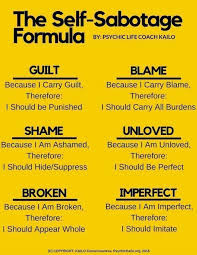Question:
Ever seen a dog in distress; perhaps caught up in something that is causing it pain? It’s a big dog, and it is growling the moment it sees you. It needs your help, but it also does not trust you, so it becomes more agitated the more abruptly you begin to walk up to it. Now, it begins to bark and tries to move, tries to get up and warn you to stay away, but this shifts the object that it is caught up in and causes more pain. This makes the dog more aggressive with it’s growling and barking, and you are now just seeing a big angry dog trying to get up and possibly attack. What do you do?
We see videos quite often demonstrating how everyday people tend to instinctively know what to do when helping a distressed animal, some of them even wild. These people are not animal rescuers or wranglers, or vets, or even employees of animal control. Just people who stopped, questioned, and proceeded with caution, often soliciting the help of others who may have been present.
When it comes to people exhibiting signs of trauma and sending out signals of needing help, the result is often not the same. Those who are trained know that many symptoms coincide with different conditions, so it is not wise to make a snap assessment with minimal information. Even to the professional, it is not always clear if a person is in crisis, or if they truly are just having a bad moment they believe they can take out on you. For either scenario, however, would it hurt to try having compassion in that moment considering that their behaviors could be the result of trauma followed by chronic unconscious reaffirming of their negative behaviors?
With trauma or adverse experiences, we can be left with multiple effects including anxiety, anger, resentfulness, unhappiness, and high irritability. It could show up in detachment and withdrawal from others, and fluctuating moods or behaviors. It could even manifest in actions that seem positive due to their output, but are the offspring of avoidance from having to deal with the things that need to be healed within. Those actions might be taking on too many projects or tasks, over-exercising, and constantly putting the needs of others before their own. They are often rewarded for their abilities, performance, work ethic and so forth, and are usually not recognized as candidates of potential risk.

Trauma has been stereotyped to present itself in a way that would be easily recognizable and something others are able to empathize with. Instead, just as we overlook the one with all of the accolades, so do we with those who seem irritable, angry, or attitudinal, which is the focus for this post. Due to the defiant way their trauma presents itself, they often create situations that are met with responses that could invite more trauma. This is both an act of protection as well as a way to receive what they have been made to believe they deserve; the self-fulfilling prophecy. It goes like this:
Person: been neglected consistently since childhood.
Message to self: I am not worthy of love
Person’s actions: pushes people away and/or refuses to let anyone close, preventing them from ever actually having to leave on their own. The person makes sure that others stay at a certain distance or they will create situations to cause a rift. These can be conscious or unconscious actions.
Result: the person does not form or maintain relationships so that they don’t have to risk being neglected by them and/or the theory of being unloved is confirmed.

It can also look like: (this list is NOT exhaustive)
Disrespect to parental figures/elders, as well as over-compliance to these same figures.
Substance abuse/dependence
Engaging in risky behaviors/criminal activity
Having numerous sexual partners
Consistent difficulty in relationships
Low self-esteem/negative self-image
Avoidance of others
Depressed mood or, chronically elevated mood
Chronic pain
Those with a history of adverse experiences, especially those beginning in early childhood, who express their trauma in ways that are not socially acceptable, are further castigated. This reprimand reinforces the trauma but does nothing to help them learn to address it properly. Instead, they are further reminded that they are ultimately worthless.
What usually happens is people will respond to the hurt person with the same energy received from them, even if they know better communication styles. They take what the hurt person has done or said personally and begin to speak the language of the broken. Instead of teaching them a new language, they shut down the people who are at the neophyte level of learning how to expel the trauma, and when they vent in the only way they know how, the in-kind response continues the cycle; feeding right into the tainted mindset of the hurt individual who is subconsciously seeking scenarios that validate how much no one sees, understands, or cares enough for them to ever love their ugly.
One of the more positive ways to be the catalyst for change is to teach, rather than criticize. As stated in this blog post, Fool me once, there is no reason that a person is able to mistreat you continually on the basis that they have experienced substantial trauma. If they are not able to heal without inflicting trauma upon you, they should not be able to pollute your space.
With that being said, as a person with this new information, perhaps it would behoove you to pause when you experience some of the more frowned upon behaviors in an individual. Rather than moving to scold them or dismiss them, try pointing out the behavior and addressing it from a place of love and concern.
The demonstration of what positive stress responses look like coupled with you letting them know that you want to understand more of their story, can of itself be a powerful weapon to enhance the healing process for a person. Often times, they have not been modeled positive expressions of pain, anxiety, fear, or hurt. It is not uncommon for there to be a need to teach this and leading by example is an excellent passive technique.
Next time you see someone react in this way, try a different approach. Try one of compassion and curiosity. With boundaries in place, give them the space and opportunity for change. Understand that this person is still learning a new language and still might get things twisted at times, but shutting them out will not advance their learning.
No, it is not the job of the healed to ALWAYS pause for abuse from others who are still broken. But if you are here, chances are at your core you know you have the ability to birth life into everything, even into she who is already alive.

Question:
Ever seen a girl in distress; perhaps caught up in something that is causing her pain? She’s so far from/almost is/is a big girl, and she is growling the moment she sees you. She could use some help, but she does not trust anyone, so she becomes more agitated the more aggressively you try to tell her how to deal with her pain. Now, she begins to yell, tries to move, tries to get up and warn you to stay away, but even this re-triggers the emotions that she is caught up in and it causes more pain. This makes her look more aggressive when she’s growling and barking, and now all you see is an angry woman disrespecting you. What do you do?
You recognize the growl of fear; the reason she looks as if she wants to bite your head off. You see what even she can’t because she has been trapped out in the open for so long, unable to see beyond the constant dismissal of her dismay. No, you will not allow her to bite you because of her fear, but you also will not throw rocks at her, right? You approach her slowly, speak gently, put a hand out, gesture permission, and allow her to eventually come to the understanding that not everyone is out to hurt her.
I recently wrote a poem that reflects on the struggles that women, namely black women and girls, face when dealing with their adverse experiences (see it here on my IGTV – follow for your MyMahogany Minutes!). The poem focuses on black women specifically, but negative experiences inform the actions of us all in some way. Check it out and leave your comments on it and on the post below.
Has this changed your views in some ways? Have you seen any of these signs of trauma in someone you know? Let’s talk about it. SUBSCRIBE!

I think it’s easy to throw stones….. it’s easy to judge……. the analogy is amazing.
I wonder if I displayed some of this behavior in the past when I was not well….
I think we all have had these moments. Part of learning better behaviors with people is to practice better behaviors with people, and that is a give and take. We Must be willing to help others if we truly want to see them grow, and we must be willing to listen to the feedback regarding our behaviors as well. Thanks for reading!
Never thought of people trauma from the perspective of an injured animal that people flock to help. Great analogy.
a bit more relatable for some! Thank you.